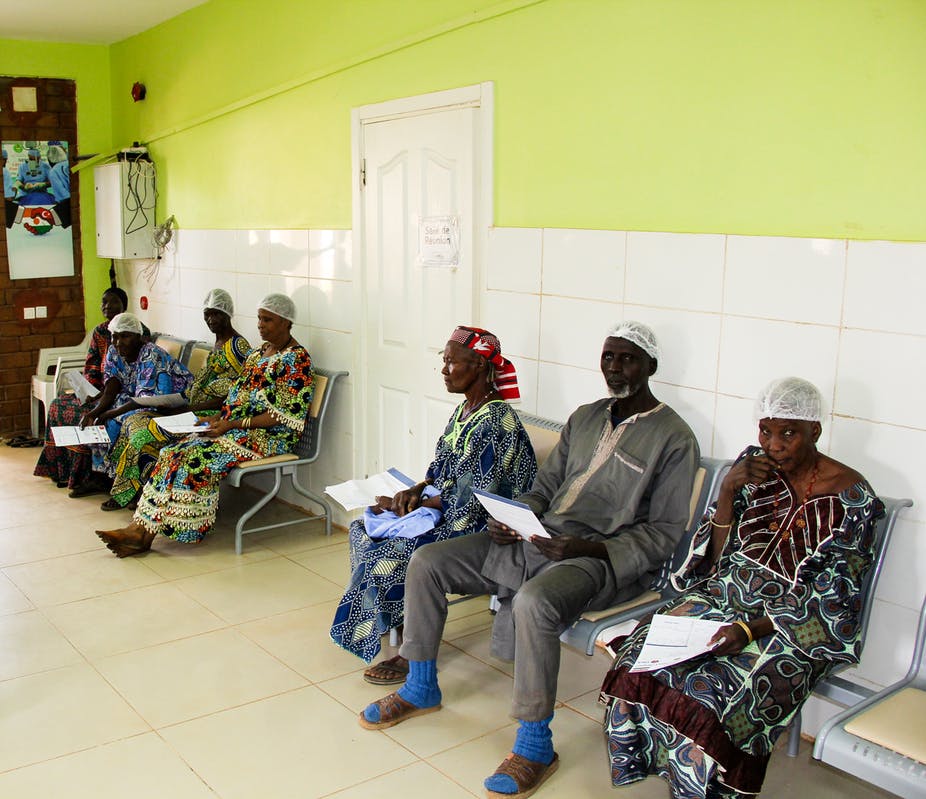BY CHARLES SHEY WIYSONGE
People are now living longer in sub-Saharan Africa than they did two decades ago. This is an achievement, given that life expectancy in the region went down the drain from the 1990s to the mid-2000s
as it choked under the devastating effects of the HIV epidemic.
The question to ask is whether the additional years are spent in good or poor health. This question matters because how long people live affects the population’s state of health and leading causes of disability. Longevity means that these change over time which in turn has implications for policy, planning and provision of services.
We used information from the Global Burden of Disease study to calculate healthy life expectancy in sub-Saharan Africa. Healthy life expectancy refers to the average number of years that a person at a given age can expect to live in good health, taking into account mortality and loss of functional health.
The data suggest that people are living many years in poor health in the region. And our paper shows that there are large inequalities in healthy life expectancy and disease burden between – and within countries – in sub-Saharan Africa.
Advertisement
This points to the fact that much more effort is needed to increase healthy life expectancy in the region.
Discrepancies
We found that the increase in healthy life expectancy in sub-Saharan Africa was smaller than the increase in overall life expectancy. This indicates that many years are lived in poor health in the region. In 2017, life expectancy at birth in sub-Saharan Africa was 63.9 years, but healthy life expectancy was only 55.2 years. This means that 13.6% of years of life in the region is spent in poor health.
Life expectancy in 2017 varied by sub region, ranging from 62.4 years in Central Africa to 65 years in Southern Africa. However, in Central Africa 14.4% and in Southern Africa 13.8% of these years are estimated to be spent in poor health, respectively.
Advertisement
The proportion of years of life spent in poor health varied between countries, ranging from 11.9% in Djibouti to 14.8% in Botswana.
While women live longer than men, many of these extra years are lived in poor health. The life expectancy at birth for women in sub-Saharan Africa in 2017 was 66.2 years, but healthy life expectancy was only 56.8 years. Thus, women spend 14.2% of their years in poor health. For men, life expectancy was 61.7 years and healthy life expectancy was 53.7 years. Thus, men in sub-Saharan African spend 13% of their lives in poor health.
Healthy life expectancy
The average healthy life expectancy at birth in sub-Saharan Africa increased by 9.1 years, from 46.1 years in 1990 to 55.2 years in 2017. The increase in health life expectancy at birth varied from 0.9 years in Southern Africa to 12.4 years in Eastern Africa.
Even larger variations in healthy life expectancy than these were observed between countries, ranging from a decrease of 4.9 years in Lesotho (51.9 years in 1990 to 47 years in 2017) to an increase of 23.7 years in Eritrea (30.7 years in 1990 to 54.4 years in 2017).
Advertisement
In most countries, the increase in healthy life expectancy was smaller than the increase in overall life expectancy, indicating more years lived in poor health.
Causes of premature mortality and disability
We calculated a measure known as disability-adjusted life-years, which captures both early death and ill health. In 2017, the leading causes of disability-adjusted life-years in sub-Saharan Africa for all ages and both sexes combined were neonatal disorders, pneumonia, HIV/AIDS, malaria, and diarrhoea.
However, we observed various dramatic changes in causes of early death and disability between 1990 and 2017. Measles decreased from a ranking of 5th to 20th, heart attacks increased from 16th to 11th, stroke from 12th to 10th, and diabetes from 27th to 14th. We are thus witnessing gradual shift from communicable to non-communicable causes of disease burden.
There was wide variation between countries in the causes of early death and disability.
Advertisement
In Eritrea, the top causes of early death and disability were neonatal disorders, diarrhoea, tuberculosis, pneumonia, and congenital defects. The most dramatic changes were with conflict and terror (1st in 1990 to 14th in 2017), measles (7th to 74th), tetanus (9th to 82nd), heart attacks (17th to 11th), stroke (12th to 10th), and diabetes (22nd to 15th).
In the Central African Republic, the top causes of early death and disability were diarrhoea, neonatal disorders, pneumonia, HIV/AIDS, and tuberculosis. The main changes were with conflict and terror (164th to 9th), measles (7th to 20th), heart attacks (14th to 11th), and diabetes (21st to 16th).
Advertisement
In South Africa, the top causes of early death and disability were HIV/AIDS, neonatal disorders, pneumonia, interpersonal violence, and diabetes. The most dramatic changes occurred with HIV/AIDS (53rd to first), measles (12th to 55th), diarrhoea (2nd to 8th), and diabetes (from 13th to 5th).
In the Gambia, the top causes of early death and disability were neonatal disorders, pneumonia, HIV/AIDS, diarrhoea, and sickle cell disease. There were substantial changes in rankings for HIV/AIDS (61st in 1990 to 3rd in 2017), malaria (4th to 25th), measles (9th to 70th), heart attacks (13th to 6th), stroke (14th to 9th), and diabetes (28th to 18th).
Advertisement
Extraordinary progress, but . .
Since 1990, we have seen exceptional progress in sub-Saharan Africa in reducing the burden of communicable diseases, especially measles, tetanus and other vaccine-preventable diseases. However, early death and disability due to these causes remain unnecessarily high in many countries. Immunisation efforts have been helpful, but progress in coverage has slowed in the past decade. Close to 20 million children worldwide, most of them in sub-Saharan Africa, didn’t receive vaccines against these deadly diseases in 2017. Conflict, inadequate investment in national immunisation programmes, and vaccine stock outs were among the reasons for the stalled progress in immunisation coverage.
Our report shows that there is an unfinished agenda of controlling communicable diseases – compounded by an increase in non-communicable diseases – in sub-Saharan Africa. The continued burden of disabling conditions has serious implications for health systems and health-related expenditures in the region.![]()
Advertisement
Charles Shey Wiysonge, Director, Cochrane South Africa, South African Medical Research Council
This article is republished from The Conversation under a Creative Commons license. Read the original article.
Add a comment






